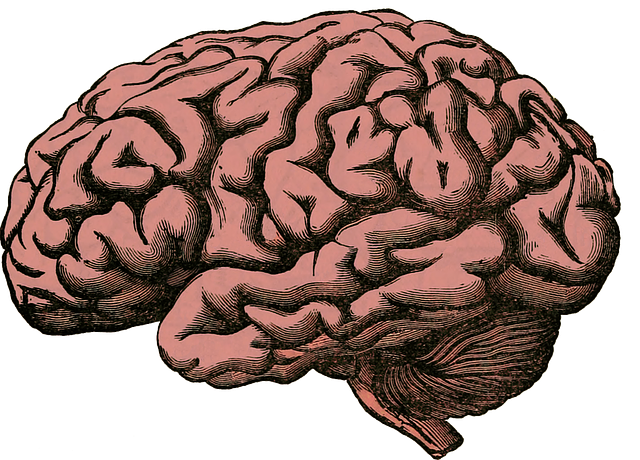 Neurobiology
Neurobiology
Help or harm? How immune cells of the brain balance the immune response
An immune response is the body’s way of limiting damage and paving the way for repair. Specialized cells kill harmful invaders, clean up damaged tissue, and contribute to healing. A particularly important immune cell type in fulfilling these responsibilities is the macrophage.

Macrophages are found in essentially all tissues. Kupffer cells are in the liver, alveolar macrophages are in the lungs, monocytes are in bone marrow and blood, and microglia are in the brain and spinal cord - and the list goes on.
The brain and spinal cord, collectively known as the central nervous system (CNS), house a very specialized and sensitive cell type: the neuron. The CNS is also encased by a structure called the blood-brain barrier, limiting interactions between cells within the CNS and the rest of the body. Because of the highly vulnerable nature of CNS tissue and its segregation from the rest of the body, immune processes within the CNS have long been thought of as limited or harmful. We now know that macrophages coming into the brain and spinal cord from outside the CNS (we'll call these infiltrating macrophages) are key orchestrators of the immune response after an injury.
But we still don't know exactly what microglia and infiltrating macrophages do. Are they helpful or harmful? How do they interact with one another? With our study, we aimed to answer some of these questions.
Historically, answering these questions was not possible because microglia and infiltrating macrophages become virtually indistinguishable once activated and in the same area. We used a technique called fate mapping to label microglia and distinguish them from infiltrating macrophages before they became activated and before they were both in the CNS. Very early after an injury to the spinal cord, infiltrating macrophages outnumbered tissue-resident microglia. After only a couple of days, microglia dominated. By a week, three-quarters of macrophages in and around the lesion were microglia.
More unexpected to us was where microglia and infiltrating macrophages were located. As the proportion of microglia grew, they created a barrier between infiltrating macrophages and the rest of the spinal cord. These were interesting findings, and we became curious if these were phenomena specific to the CNS. We also wondered how the ratio of microglia and infiltrating macrophages were changing so dramatically.
To see if these were CNS-specific phenomena, we used the same genetic labelling strategy. We looked at peripheral nerves, the most comparable environment in the body outside the brain and spinal cord. We saw the opposite. Compared to the tissue-resident macrophages, infiltrating macrophages dominated very quickly after the injury to the peripheral nerve. Unlike the CNS, it continued to dominate as long as a week afterwards. Because there was no rise in the population of tissue-resident macrophages, they could not contain infiltrating macrophages - something about the CNS limits infiltrating macrophages.
The proportion of microglia to infiltrating macrophages could be changing in two ways: microglia could be expanding, or infiltrating macrophages could be dying off. Labelling both cell types with markers of replication or death, we found both to be true. Microglia preferentially replicate and increase in number while infiltrating macrophages slowly die off. We selectively deleted all microglia in the CNS to determine if the interaction between microglia and infiltrating macrophages was helpful or harmful. Infiltrating macrophages uncontained by microglia results in more loss of axons (nerve fibres carrying information between neurons). Microglia, therefore, appear to be essential in maintaining the delicate balance between benefit and damage in CNS tissue.
Immune cell activation is often thought of as binary: a cell is either on or off. We wanted to gain better insight into the complexity of microglia activation after injury in the spinal cord. We used a technique called single-cell RNA sequencing. Measuring RNA allows you to see what protein tools a cell is making, which gives insight into the functions it could be performing. When we looked at the RNA of individual microglia, we found three distinct activation states. Learning how microglia transition between these activation states and how different activation states interact with one another are questions we intend to answer with future research.
We are working on learning more about the complex immune processes within the CNS to limit the negative aspects and harness the healing powers of immune cells. We can then use that information for developing therapies for neurodegenerative diseases, demyelinating disorders, and traumatic injuries to the brain and spinal cord.
Original Article:
Plemel J, Stratton J, Michaels N et al. Microglia response following acute demyelination is heterogeneous and limits infiltrating macrophage dispersion. Sci Adv. 2020;6(3):eaay6324.Next read: Can we use a magnet to see brain inflammation? by Raquel Garcia-Hernandez , Santiago Canals , Silvia de Santis
Edited by:
Massimo Caine , Founder and Director
We thought you might like
Heart failure: unexpected role of stem cell treatments
Oct 5, 2020 in Health & Physiology | 3 min read by Emma J. Agnew , Ronald J. Vagnozzi , Jeffery D. MolkentinMore from Neurobiology
New, smaller-than-ever devices to help us understand how our brain works from the inside
Nov 8, 2024 in Neurobiology | 4 min read by Filippo DonatiCan we use a magnet to see brain inflammation?
Sep 25, 2023 in Neurobiology | 4 min read by Raquel Garcia-Hernandez , Santiago Canals , Silvia de SantisSurprising Behavior Changes in Genetically Modified Syrian Hamsters
Aug 30, 2023 in Neurobiology | 4 min read by Susan Lee , Kim Huhman , Jack TaylorTo achieve goals, we definitively need our neurons
Mar 10, 2023 in Neurobiology | 3.5 min read by Julien CourtinThe Impact of SARS-CoV-2 on the Brain: It Is All in Your Head
Feb 15, 2023 in Neurobiology | 3.5 min read by Meredith G. Mayer , Tracy FischerEditor's picks
Trending now
Popular topics


